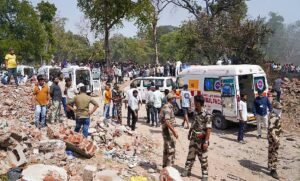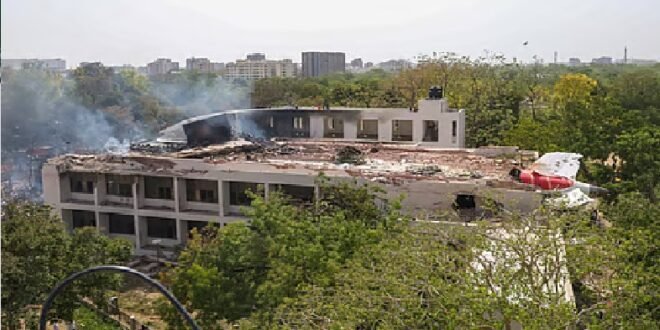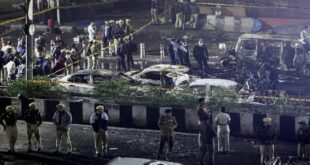24-09-2025
Bureau Report
NEW DELHI: India’s Supreme Court on Monday asked the government to respond to a plea seeking an independent investigation into the Air India plane crash on June 12 that killed 260 people.
 The top court was responding to a public interest litigation filed by NGO Safety Matters Foundation, marking its first examination of the probe being carried out by Indian authorities into the incident.
The top court was responding to a public interest litigation filed by NGO Safety Matters Foundation, marking its first examination of the probe being carried out by Indian authorities into the incident.
In a hearing on Monday, lawyers for the NGO questioned the inclusion of officials from the aviation safety regulator on the probe panel, saying it created a “conflict of interest”.
“The investigation necessarily involves a critical examination of DGCA’s own regulatory actions and possible lapses,” the NGO’s plea said.
The Air India-operated Boeing 787 crash killed all but one of the 242 people on board and 19 others on the ground, after the plane lost thrust shortly after takeoff from the Ahmedabad airport.
A preliminary investigation report released earlier by the Indian government showed pilot confusion in the cockpit shortly before the crash after the plane’s fuel engine switches had almost simultaneously flipped from run to cutoff just after takeoff.
The report appeared to exonerate Boeing and engine maker GE Aerospace, but some family groups have criticized investigators and the press for being too focused on the pilots’ actions.
“Three of the members are the serving officers of the Directorate General of Civil Aviation (flight safety regulator), which creates a very serious conflict of interest,” the NGO’s lawyer Prashant Bhushan told the judges.
The court said it will review the demand for a “fair, impartial and independent and expeditious” investigation and it has asked the government to respond.
The case comes just days after a separate case was filed in the United States by families of four passengers against Boeing and Honeywell, which made the switches.
 In mid-July, a preliminary report depicted confusion in the cockpit shortly before an Air India jetliner crashed and killed 260 people last month, after the plane’s engine fuel cutoff switches flipped almost simultaneously and starved the engines of fuel.
In mid-July, a preliminary report depicted confusion in the cockpit shortly before an Air India jetliner crashed and killed 260 people last month, after the plane’s engine fuel cutoff switches flipped almost simultaneously and starved the engines of fuel.
The Boeing, opens new tab 787 Dreamliner bound for London from the Indian city of Ahmedabad began to lose thrust and sink shortly after takeoff, according to the report on the world’s deadliest aviation accident in a decade released on Saturday by Indian accident investigators.
The report by India’s Aircraft Accident Investigation Bureau (AAIB) about the June 12 crash raises fresh questions over the position of the critical engine fuel cutoff switches.
Almost immediately after the plane lifted off the ground, closed-circuit TV footage showed a backup energy source called a ram air turbine had deployed, indicating a loss of power from the engines.
In the flight’s final moments, one pilot was heard on the cockpit voice recorder asking the other why he cut off the fuel. “The other pilot responded that he did not do so,” the report said.
It did not identify which remarks were made by the flight’s captain and which by the first officer, nor which pilot transmitted “Mayday, Mayday, Mayday” just before the crash. The commanding pilot of the Air India plane was Sumeet Sabharwal, 56, who had a total flying experience of 15,638 hours and, according to the Indian government, was also an Air India instructor. His co-pilot was Clive Kunder, 32, who had 3,403 hours of total experience.
 Pressmediaofindia
Pressmediaofindia




